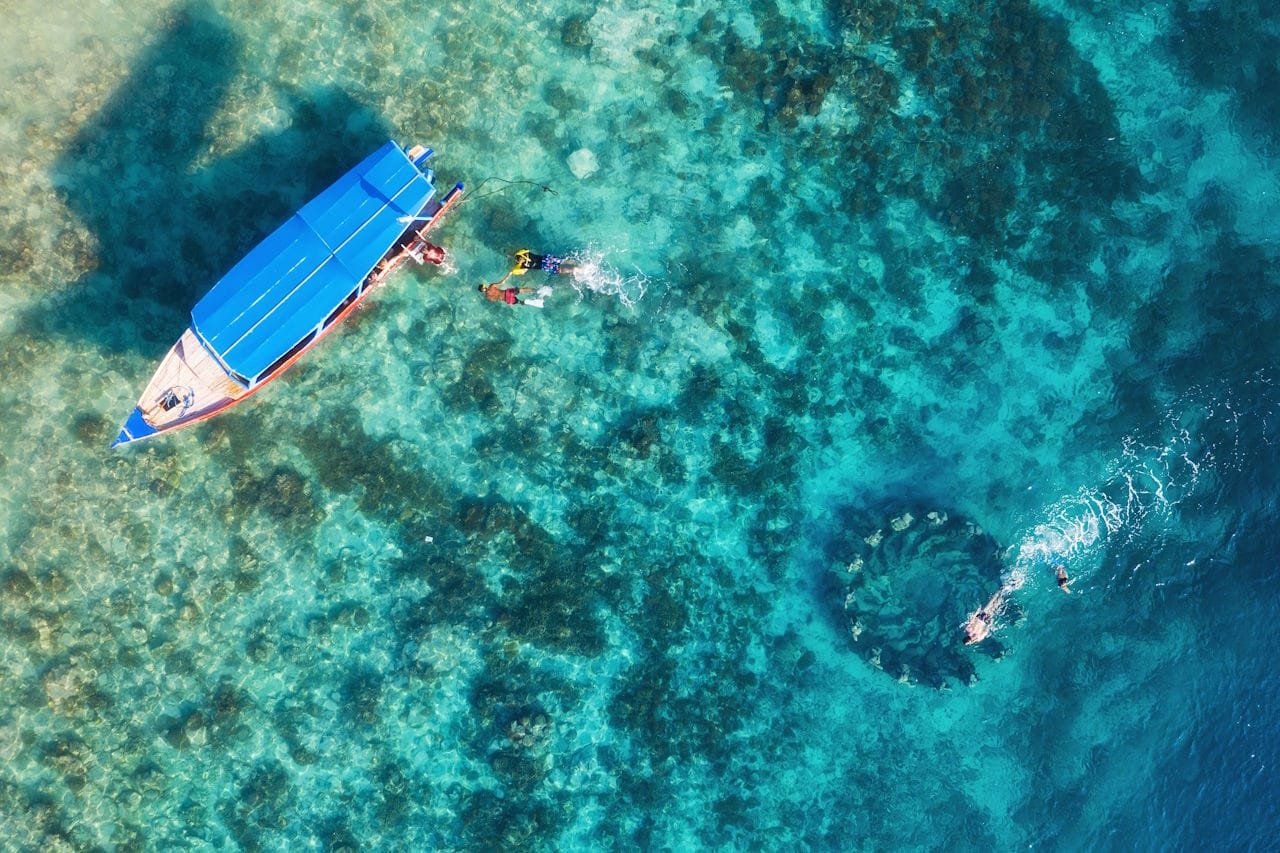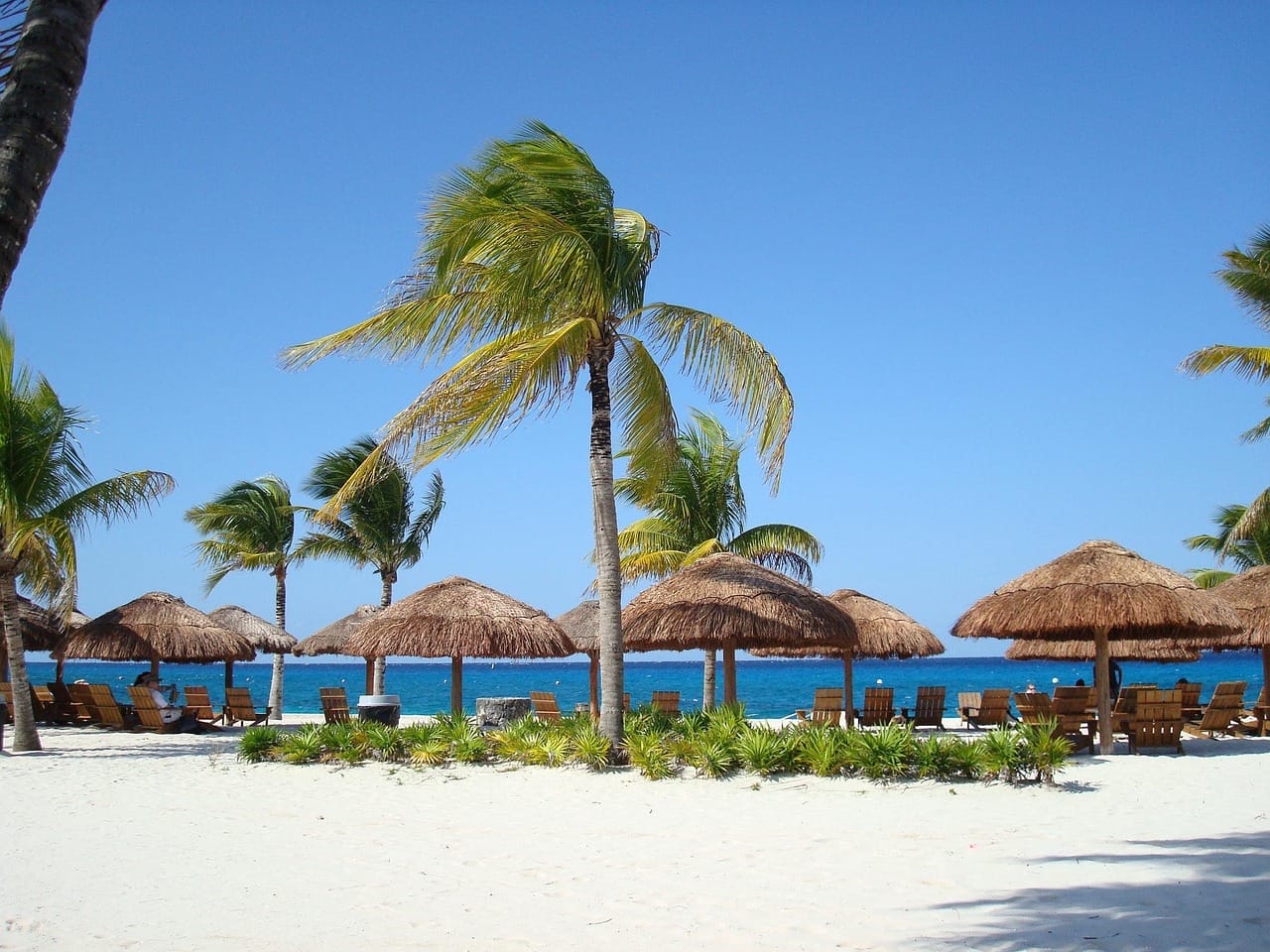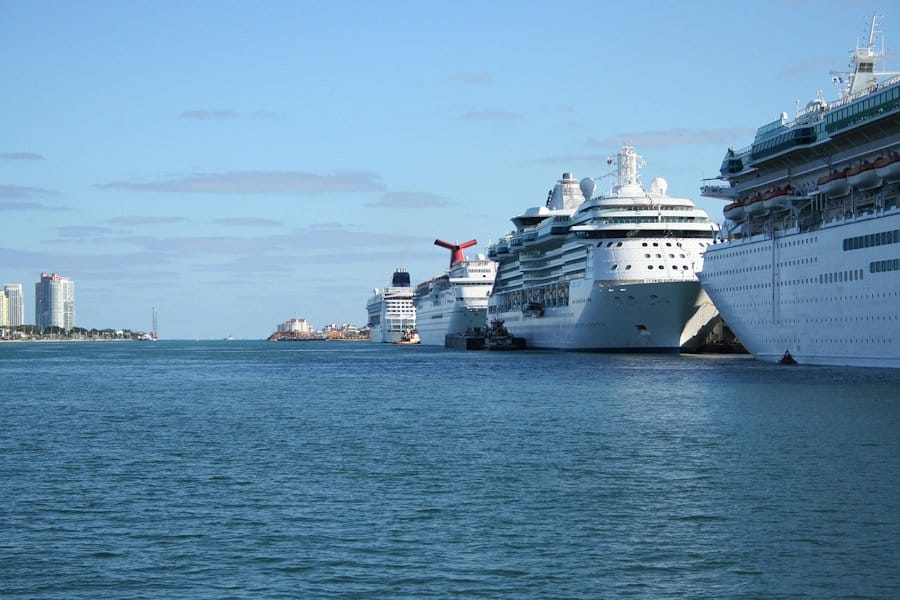Embarkation day is the gateway to your cruise adventure, whether you’re setting sail from vibrant hubs like Miami, Seattle, or New York City. As thousands of passengers converge on cruise terminals, the process of checking in, clearing security, and boarding can feel overwhelming without proper preparation.
A well-planned embarkation day ensures you start your vacation stress-free, sipping a cocktail by the pool instead of wrestling with logistical hiccups. This comprehensive guide shares expert tips for a seamless embarkation experience, covering logistics, packing, port-specific strategies, and insider advice for North American cruisers.
*Note that all pricing reflects rates as of April 2025 and is subject to change.
Table of Contents
ToggleWhy Embarkation Day Matters
Embarkation day is more than just the moment you step onto the ship—it sets the tone for your entire cruise. At major ports like Port Canaveral or PortMiami, the process involves checking in, passing through security, and boarding, which typically takes 1–2 hours during peak periods.
However, common pitfalls like missing documentation, arriving late, or misunderstanding port logistics can lead to delays, frustration, or even missed sailings. Proper planning transforms this potentially chaotic day into a smooth transition, allowing you to maximize your time onboard.
Whether you’re a first-time cruiser or a seasoned traveler, preparation is key to kicking off your vacation with ease. For additional insights, explore resources like Embarkation Day First Time Cruiser – First Day Tips!. to understand what to expect.
The stakes are high on embarkation day because it’s your first interaction with the cruise line’s operations and the port’s infrastructure.
A smooth experience allows you to enjoy onboard amenities like pools, restaurants, or spa facilities right away, while mistakes can leave you stuck in long lines or scrambling to resolve issues. By anticipating challenges and following proven strategies, you can ensure you’re poolside with a drink in hand by noon, ready to embrace your cruise adventure.
Common Challenges on Embarkation Day

Embarkation day comes with inherent challenges that can disrupt even the most enthusiastic traveler. Understanding these hurdles helps you plan effectively:
- Crowds: Peak boarding times, typically between 11 a.m. and 2 p.m., see thousands of passengers converging on terminals, leading to long lines at check-in and security. Major ports like Miami can process over 5,000 passengers in a single afternoon, creating bottlenecks.
- Documentation: Missing or incorrect documents, such as passports or boarding passes, can halt the check-in process. Forgetting to complete online check-in or failing to bring required visas (e.g., for Canada/New England itineraries) can prevent boarding entirely.
- Luggage: Mishandled or improperly tagged checked bags may get lost or delayed, while overpacking carry-ons can slow security screenings. Porters and crew rely on accurate luggage tags to deliver bags to cabins efficiently.
By addressing these challenges proactively, you can navigate the embarkation process with confidence and avoid common pitfalls that frustrate unprepared travelers.
Top 5 Embarkation Day Tips
To ensure a smooth embarkation day, follow these expert tips, designed to streamline logistics, save time, and reduce stress.
Complete Online Check-In Early
Why: Most major cruise lines, including Carnival, Norwegian, and Royal Caribbean, offer online check-in 30–60 days before sailing. This process allows you to upload a photo, input passport details, select a boarding time, and print your boarding pass, significantly reducing wait times at the terminal.
How: Log into the cruise line’s website (e.g., carnival.com, ncl.com, or royalcaribbean.com) or mobile app 1–2 weeks before your cruise to complete check-in. You’ll need your booking number, passport information, and a credit card for onboard expenses. The process takes about 10–15 minutes and generates a digital or printable boarding pass.
Tip: Choose an early boarding slot, such as 10–11 a.m., to avoid peak crowds. Early boarders often breeze through check-in and security, gaining access to onboard amenities like buffets or pools before the rush. If you miss online check-in, you can complete it at the terminal, but expect longer lines and manual processing.
Expanded Insight: Online check-in also allows you to pre-book onboard activities, such as dining reservations or spa appointments, which can fill up quickly on embarkation day. For example, Carnival’s Hub App lets you reserve spots for specialty restaurants like Emeril’s Bistro, ensuring you don’t miss out.
Check-in early to secure your preferred boarding time and onboard experiences, especially on larger ships like Carnival’s Excel-class vessels, which carry up to 6,500 passengers.
Arrive a Day Early
Why: Traveling to the port on the same day as your cruise is risky due to potential flight delays, traffic, or unforeseen disruptions. Ports like Miami (20–40 minutes from Miami International Airport) and Seattle (20–25 minutes from Seattle-Tacoma International Airport) are accessible but not immune to logistical challenges.
How: Book a hotel near the port the night before your cruise. In Miami, options like the Hampton Inn & Suites Miami/Brickell-Downtown cost approximately $150 per night and offer proximity to PortMiami.
In Seattle, the Edgewater Hotel, with stunning waterfront views, runs around $200 per night and is steps from Pier 66. Many hotels provide shuttle services to the terminal for $10–$20 per person, or you can use rideshare apps like Uber or Lyft for similar rates.
Tip: Use the extra day to explore local attractions. In Seattle, visit Pike Place Market or the Space Needle, both within a short ride from downtown hotels. In Miami, South Beach’s vibrant dining and nightlife scene is a $10 taxi ride from most port-area hotels.
Book hotel and shuttle packages via cruiseportadvisor.com/ports/seattle or cruiseportadvisor.com/ports/miami for deals and recommendations.
Expanded Insight: Arriving early also gives you a buffer to handle last-minute issues, such as replacing a forgotten document or purchasing travel essentials. For families, this extra day can serve as a mini-vacation, allowing kids to burn off energy before boarding.
Many cruise lines partner with local hotels to offer “park-and-cruise” packages, which include parking for the duration of your trip, saving you from high terminal parking fees (e.g., $22/day in Miami). Check with your cruise line or travel agent for these deals to maximize convenience and savings.
Pack a Carry-On Bag
Why: Checked luggage is delivered to your cabin hours after boarding, often not arriving until late afternoon or evening. A well-packed carry-on ensures you have immediate access to essentials, allowing you to start enjoying the ship right away.
What to Pack: Include your passport, boarding pass, a change of clothes, swimsuit, toiletries, sunscreen, medications, and any valuables (e.g., jewelry, electronics). A small backpack or tote is ideal, as it’s easier to manage than a rolling suitcase during security checks.
Tip: Keep valuables in your carry-on, as checked bags are handled by porters and may pass through multiple hands. Security scans all bags, so avoid prohibited items like alcohol or sharp objects to speed up the process. Check your cruise line’s website for a full list of restricted items.
Expanded Insight: A carry-on bag is your lifeline on embarkation day, especially for families with young children or travelers with medical needs. For example, pack snacks, diapers, or entertainment (e.g., a tablet or book) for kids to keep them occupied during check-in or while waiting to board.
If you plan to hit the pool or waterpark immediately, include swimsuits and cover-ups so you don’t need to wait for your luggage. A portable charger is also a smart addition, as terminals and ships may have limited outlets during the busy embarkation period. By packing strategically, you can transition seamlessly from the terminal to onboard relaxation.
Verify Documentation
Why: Incorrect or missing documentation is one of the most common reasons passengers are denied boarding. For Caribbean cruises, a valid passport is required for all passengers, including children. Canada/New England itineraries may require additional visas for non-U.S. citizens, depending on the ports visited.
How: Check documentation requirements at least three months before sailing via travel.state.gov. Ensure passports are valid for at least six months beyond your return date, as some destinations enforce this rule. Print your boarding pass and luggage tags after completing online check-in, and bring digital copies on your phone as a backup.
Tip: Carry both digital and physical copies of all documents, including passports, boarding passes, and any required visas. Store digital versions in a secure app or email for easy access. If traveling with children, verify that their passports or birth certificates meet cruise line requirements.
Expanded Insight: Documentation errors can be a costly mistake, potentially forcing you to miss the cruise or incur expenses to join at a later port. For international travelers, check visa requirements early, as processing times can take weeks.
For example, Canadian citizens cruising to New England may need an Electronic Travel Authorization (eTA) for certain ports. If you’re cruising with a group, designate one person to double-check everyone’s documents to avoid surprises.
Cruise lines like Carnival and Norwegian provide detailed checklists on their websites, so review these well in advance to ensure compliance.
Arrive at Your Assigned Time
Why: Cruise lines use staggered boarding times to manage crowds and reduce congestion. Ignoring your assigned slot can result in longer wait times, as terminals prioritize passengers with earlier check-in times.
How: Confirm your boarding slot (e.g., 11:30 a.m.) on your boarding pass after completing online check-in. Arrive at the terminal 15–30 minutes early to account for parking, shuttle drop-offs, or unexpected delays. Bring your boarding pass and ID for quick verification.
Tip: Early slots (10–11 a.m.) offer the fastest boarding and access to onboard amenities before crowds arrive. Late slots (1–2 p.m.) suit travelers who prefer a leisurely start but may face busier terminals. If you’re a loyalty program member (e.g., Carnival’s VIFP Club), you may qualify for priority boarding, which speeds up the process.
Expanded Insight: Adhering to your assigned time not only reduces stress but also maximizes your onboard time. Early boarders can enjoy a relaxed lunch at the Lido Marketplace, explore the ship’s amenities, or attend welcome events like sail away parties.
If you’re traveling with a large group, coordinate to select the same boarding slot to streamline the process. Be mindful of terminal logistics—larger ports like PortMiami have multiple check-in counters, but smaller ports like Seattle’s Pier 91 may have fewer, leading to bottlenecks during peak times.
Port-Specific Advice
Each cruise port has unique logistics, crowds, and amenities that impact embarkation day. Here’s tailored advice for three major North American ports:
Miami (PortMiami)
Logistics: Located 20 minutes from Miami International Airport (MIA), PortMiami is the world’s busiest cruise port. Taxis cost approximately $30, while shuttles run $15 per person. Terminal parking is $22 per day, payable in advance or at the port.
Crowds: PortMiami handles over 5,000 passengers during peak hours (noon–2 p.m.), leading to crowded check-in areas and security lines. Larger ships, like Carnival’s Excel-class vessels, exacerbate congestion.
Tip: Arrive by 10:30 a.m. to beat the rush. If you have time the day before, explore South Beach, a $10 taxi ride from port-area hotels, for vibrant dining and beach vibes.
Expanded Insight: PortMiami’s sprawling layout includes multiple terminals, so confirm your ship’s specific terminal (e.g., Terminal D for Carnival) when planning transportation. The port offers free Wi-Fi, allowing you to check boarding updates or contact your cruise line if issues arise.
If driving, pre-pay for parking online to save time, and arrive early to secure a spot close to your terminal. For families, PortMiami’s proximity to kid-friendly attractions like Jungle Island makes arriving a day early a fun pre-cruise activity.
Seattle (Pier 66/Pier 91)
Logistics: Located 20–25 minutes from Seattle-Tacoma International Airport (SEA), Seattle’s cruise terminals are accessible by taxi ($40) or light rail ($3 to downtown, then a short walk or ride to the piers). Parking costs $27 per day.
Crowds: Peak season in July sees heavy traffic at both Pier 66 and Pier 91, with the latter being less walkable due to its distance from downtown. Pier 66 is ideal for exploring Seattle’s attractions pre-cruise.
Tip: Use Pier 66 for walkable access to downtown Seattle, including Pike Place Market. Arrive a day early to enjoy the city’s coffee culture or waterfront views.
Expanded Insight: Seattle’s cruise season, primarily for Alaska itineraries, draws families and nature enthusiasts, making embarkation day busy but manageable. Pier 66’s central location is ideal for pedestrians, while Pier 91 requires transportation, so plan accordingly.
The light rail is a budget-friendly option for solo travelers or small groups, but families may prefer shuttles for convenience with luggage. Seattle’s terminals offer ample seating and free Wi-Fi, so arrive early to relax and review your boarding documents.
Logistics: Located 45 minutes from Orlando International Airport (MCO), Port Canaveral is a hub for Caribbean and Bahamas cruises. Shuttles cost $30 per person, taxis run $60, and parking is $17 per day.
Crowds: Popular with families due to Disney Cruise Line and nearby theme parks, Port Canaveral sees heavy crowds around noon, especially for larger ships.
Tip: Stay in Cocoa Beach ($120/night) the night before for a relaxed start. Arrive by 11 a.m. to avoid peak lines.
Expanded Insight: Port Canaveral’s proximity to Orlando makes it tempting to visit theme parks pre-cruise, but prioritize rest to ensure a smooth embarkation day. The port’s modern terminals are equipped with clear signage and efficient check-in processes, but family-heavy crowds can slow things down.
If driving, use off-site parking lots like Park Port Canaveral for lower rates ($10–$12/day) and shuttle service to the terminal. The port’s free Wi-Fi and cruise line apps keep you updated on boarding progress.
Additional Tips for Embarkation Day
Beyond the core strategies, these practical tips enhance your embarkation day experience:
- Dress Smart: Wear comfortable, casual clothes for embarkation, as you’ll be walking and standing in line. Save formal attire for onboard dinners. Pack a swimsuit and cover-up in your carry-on to hit the pool or hot tubs immediately after boarding.
- Budgeting: Allocate $10–$50 for transportation (taxis, shuttles) and $5–$10 per bag for porter tips. Pre-cruise meals at port-area restaurants cost $10–$40 per person. Budget for parking if driving, and consider pre-paying to streamline the process.
- Safety: Cruise terminals are secure, with trained staff and clear protocols. Keep documents and valuables on you during check-in to avoid misplacement. Follow crew instructions during security screenings to expedite the process.
- Connectivity: Most terminals offer free Wi-Fi, so download your cruise line’s app (e.g., Carnival Hub, Norwegian Cruise Line) before arriving for real-time boarding updates and ship information.
- Luggage Tags: Print luggage tags during online check-in and attach them securely to checked bags. Include your name, ship, and cabin number to ensure prompt delivery. If tags are missing, porters at the terminal can provide replacements.
Expanded Insight: These small details can make a big difference. For example, tipping porters $5–$10 per bag ensures careful handling and fosters goodwill. Using cruise line apps not only provides boarding updates but also lets you view ship maps, dining menus, and activity schedules before stepping onboard.
If traveling with children, pack a small activity bag (coloring books, snacks) to keep them engaged during wait times. For international ports, carry a universal power adapter in your carry-on, as terminal outlets may vary.
Frequently Asked Questions
- What time should I arrive? Aim for 10–11 a.m. for early boarding and shorter lines, but always follow your assigned slot to avoid delays.
- Can I board without online check-in? Yes, but expect longer wait times at the terminal, as manual check-in involves additional paperwork.
- What if I miss embarkation? Contact your cruise line immediately. You may be able to join the ship at the next port, but you’ll cover transportation costs, which can be significant (e.g., $200–$500 for flights).
- Are kids’ clubs open on day one? Most kids’ clubs (e.g., Carnival’s Camp Ocean, Norwegian’s Splash Academy) open by early afternoon. Check the ship’s daily schedule for exact times.
Expanded Insight: These FAQs address common concerns, but additional questions may arise. For instance, if you’re traveling with a large group, coordinate boarding times to ensure everyone boards together. If you have dietary restrictions, notify the cruise line during online check-in to arrange for special meals starting on day one. For loyalty program members, check for perks like priority embarkation, which can shave 15–30 minutes off the process.
Get Ready to Set Sail
A seamless embarkation day sets the stage for an unforgettable 2025 cruise, whether you’re sailing to the Caribbean from Miami, Alaska from Seattle, or the Bahamas from Port Canaveral. By completing online check-in early, arriving a day before, packing a smart carry-on, verifying documents, and adhering to your boarding time, you’ll breeze through the process and start your vacation on the right note.
Leverage resources like cruiseportadvisor.com to book hotels, shuttles, and pre-cruise activities. With these strategies, you’ll be onboard, relaxed, and ready to enjoy your cruise adventure from the moment you step foot on the ship.
This page contains affiliate links for which we may receive financial compensation when a purchase has been made through one of our affiliate partners.








